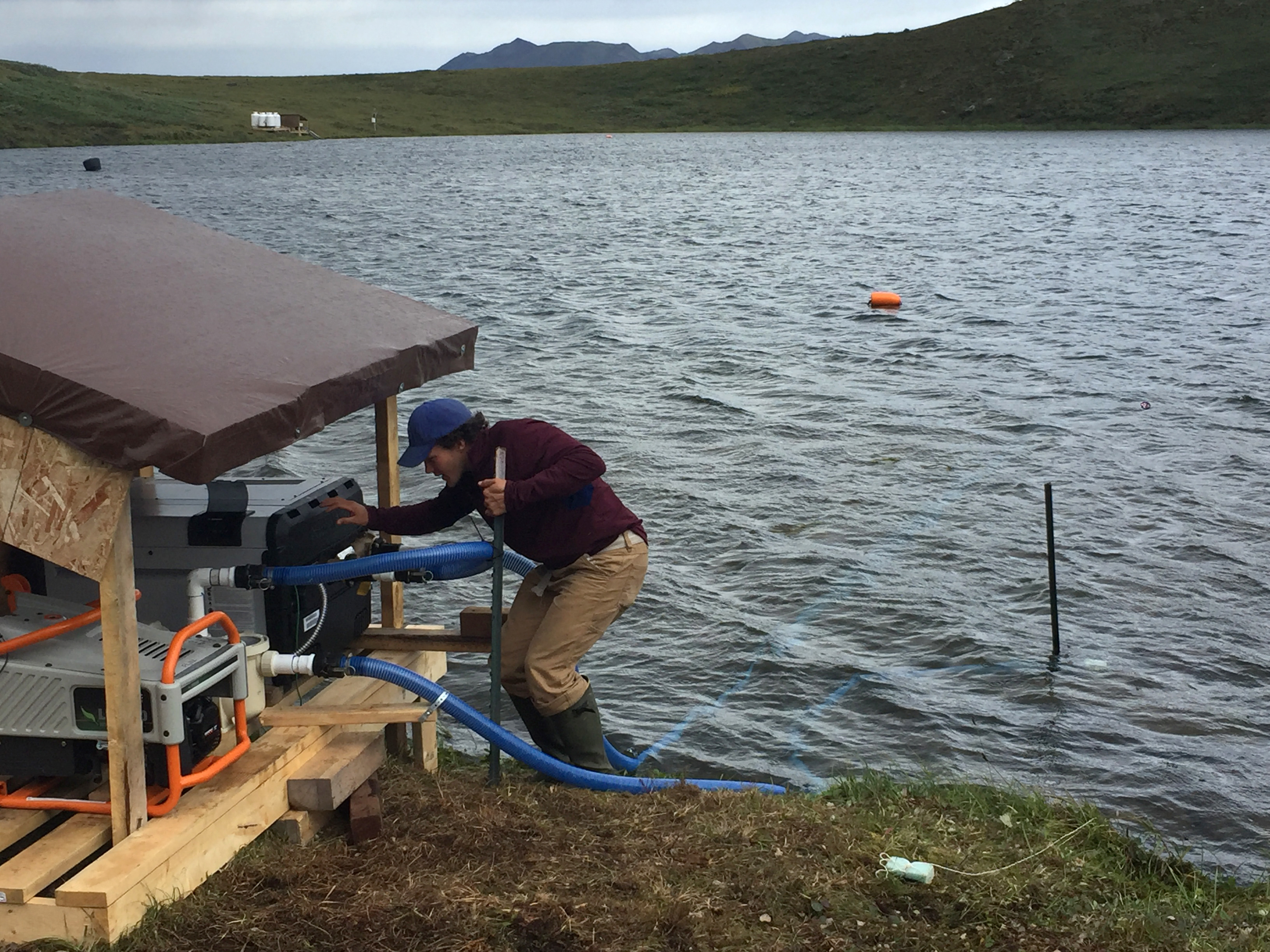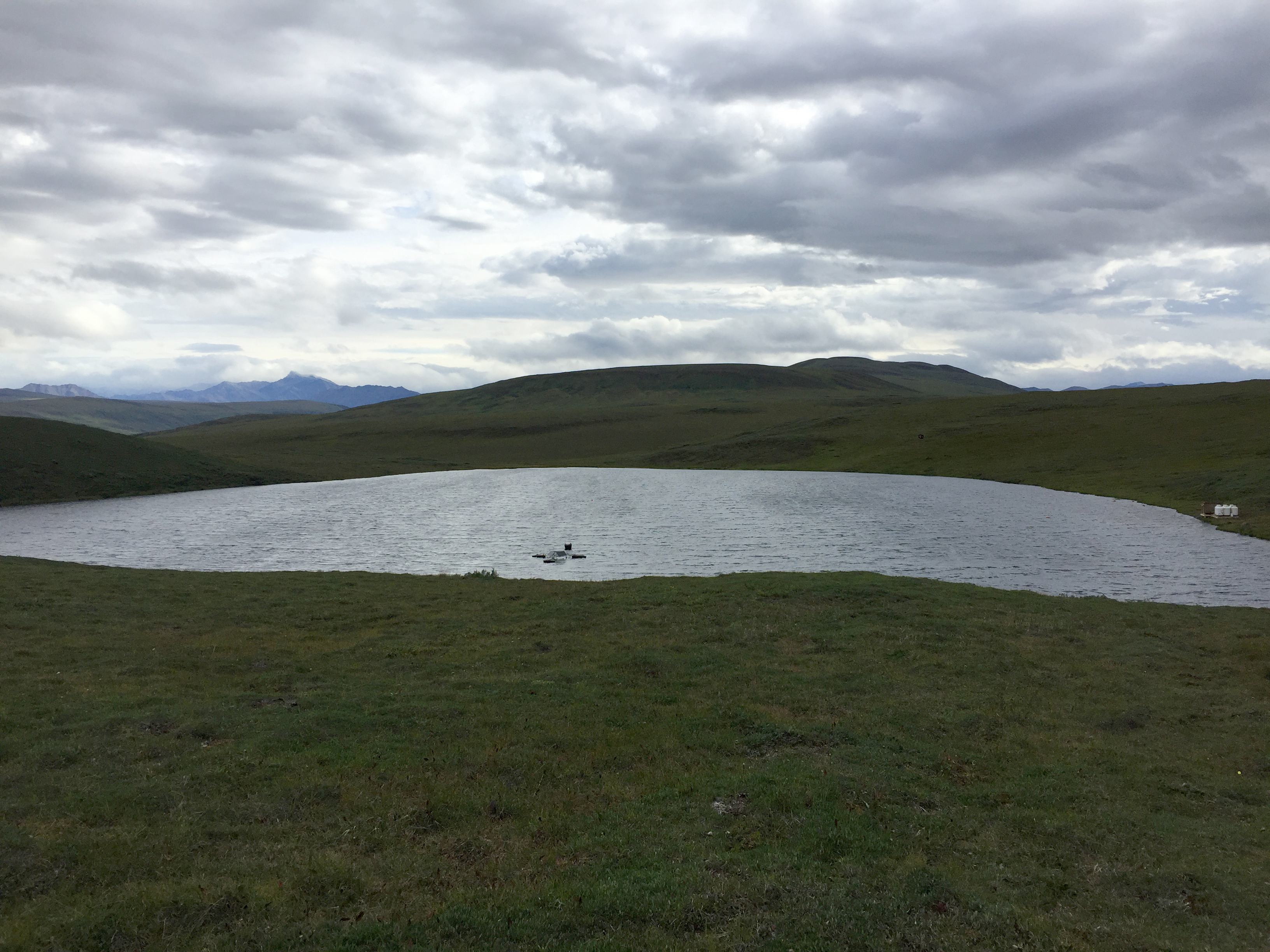North Slope lakes get artificial warmth to simulate climate change
TOOLIK LAKE — Forty-eight propane tanks, three swimming pool heat pumps and three generators are key to studying climate change in one of the fastest-warming regions in the world.
Scientists are using the equipment to warm two North Slope lakes.
Led by Phaedra Budy, head of the Fish Ecology Lab at Utah State University, a team of researchers first identified four lakes populated by arctic char and slimy sculpin around Toolik Field Station, an Arctic research station run by the University of Alaska and one of only two of its kind in the world.

Two of the lakes have been cast as controls, while the other two, starting in late summer, were warmed, their waters mixed by a variety of man-made machinery. The project is in the first year of its five-year grant from the National Science Foundation.
One of the lakes in the experiment, known as Fog 1, is a short walk from the Dalton Highway, just past a small crest of green tundra. In early August, Nick Barrett, a doctoral student at Utah State University, stood on top of the hill and pointed out two white clumps close to the lake’s shore — clusters of propane tanks, separated by hundreds of feet of choppy water.
Protected from the elements by a wooden structure, a generator at each setup powers a big, blocky heater, which, after warming the water to between 60 and 65 degrees, spits it back into the lake. Six 650-pound propane tanks for the generator are next to the configuration on a raised platform.
Budy devised the lake warming project after observing experiments at Toolik investigating how a warming climate will affect land ecosystems. Using greenhouses or large plastic cones, researchers heat the areas around tundra plants, mimicking rising temperatures and observing the plants’ reaction.
This being a lake, the setup was a little more complicated.

“I had to figure out what the analogous treatment would be for a lake because we can’t add black plastic over the lake,” Budy said in a phone interview from Utah. “So we added heat.”
About 65 feet deep, Fog 1’s waters are separated into three layers during the summer — the warm top, cold bottom and the middle thermocline, where the temperature drops rapidly between the two layers.
[North Slope ‘fish spa’ might hold answers to survival in a warming Arctic]
Both top layers in the two experimental lakes have warmed naturally over the summer. The idea is to maintain these higher temperatures by heating the lakes by 4 to 7 degrees at a time when they would naturally be starting to cool. The warmth is expected to delay ice formation by up to a month, in line with predicted warming for the area.
Using a commercially made SolarBee solar-powered mixer anchored offshore, the researchers are also mixing the surface lake water, effectively pushing the warm water down to the underlying cold water and, they hope, deepening the top layer by at least 6 feet.
Setting up this elaborate experiment miles away from an electrical outlet has been difficult. One of the more complicated parts of the process has been picking the right type of generator to supply power to the three warming platforms.
“There are a lot of twists and turns in the mechanical part of things,” Barrett said. “It’s quite the feat — you kind of aim high and settle low.”
After switching out generators, the heaters were up and running in early August. The researchers hope to observe how the organisms in the lakes — from microscopic phytoplankton to fish — react to the change. They are also looking to gain a better understanding of the warmer lakes’ physical temperature dynamics.
There are different ways that scientists expect the lake environments to respond to the added warmth. A longer warming period might stimulate organisms at the lower end of the food chain on up, producing bacteria with more biomass and, eventually, larger fish.
“If you warm up a fish it will grow faster and bigger, but that requires more to eat — that’s true at all levels of biological activity,” Budy said.
Or the whole system could become unsustainable and crash.
“(More growth) requires more nutrients at the bottom of the food web,” Budy said. “And we don’t know which way it will go.”
If the system did crash, it would likely fully recover in two to three years.
According to project’s proposal, the experiment’s findings are pertinent to Native communities in the Arctic, which rely on lakes like Fog 1 for subsistence fishing.